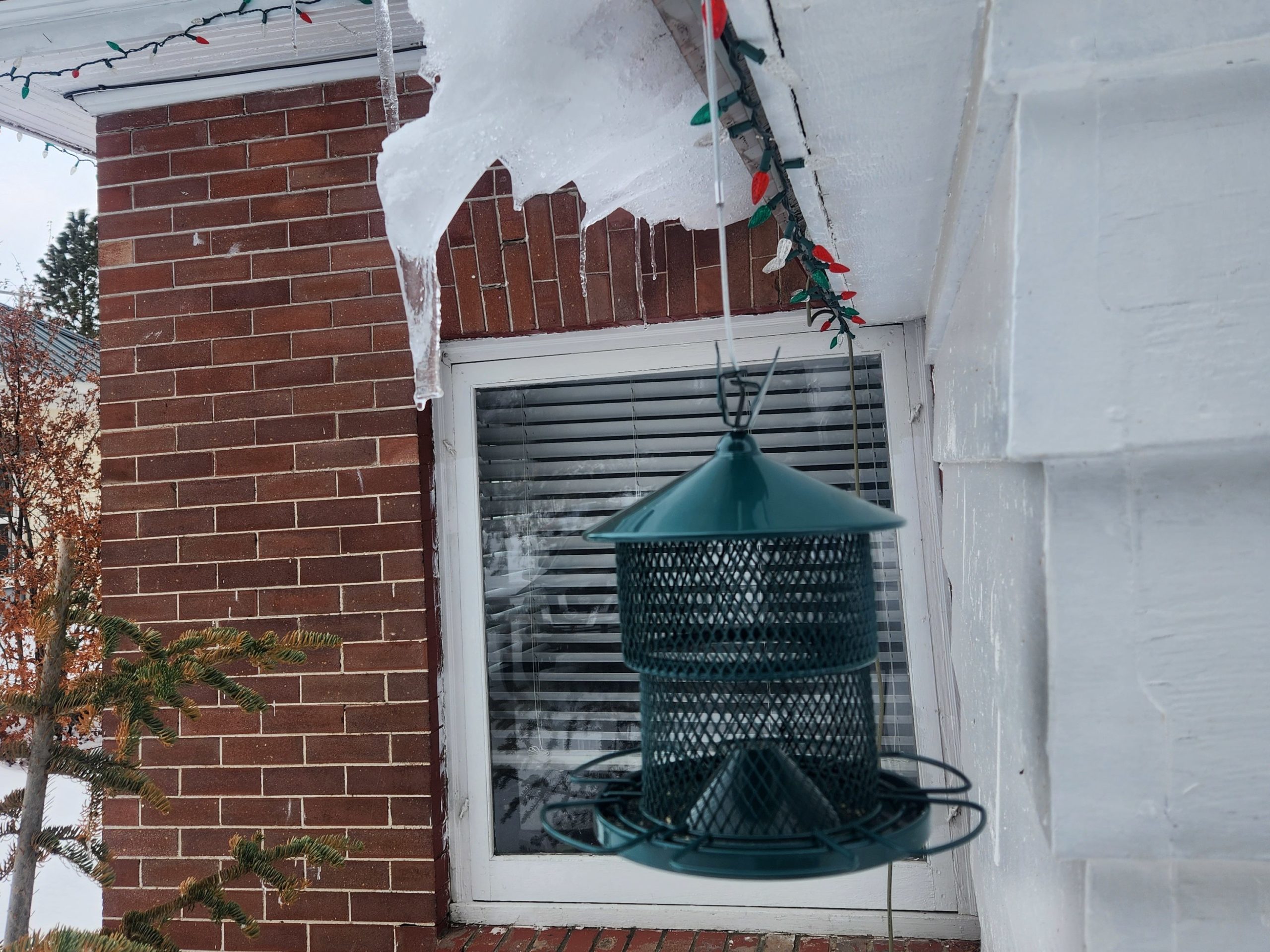By Caitlyn Wanner
Near the end of January, I noticed something odd about a couple of juvenile house finches that were visiting my bird feeder.
“Poor thing,” I thought. “Something has damaged its eye.”
One eye appeared to be completely swollen shut. With one good eye, the fella poked at my bird feeder.
A month later I noticed more birds had a similar problem, mostly house finches and a few Cassin’s finches.
6 weeks later, and as of this article, I realized to my alarm that most of the birds that visit my feeder have at least one swollen eye. What was this about?

A brief internet search served up the culprit: Mycoplasmal conjunctivitis, also called Avian conjunctivitis, or House Finch Eye Disease. This is a disease that was originally passed from poultry to house finches on the east coast but in the last 20 years it has moved west. It can affect all species of birds in the family Fringillidae, including the pine siskins, American goldfinches, and evening grosbeaks at my bird feeder, and others. Symptoms include red, swollen, runny, or crusty eyes, which can advance to the eyes swelling shut and the bird becoming blind. While some birds recover, others die from vulnerability to predators, exposure, or starvation.
Project FeederWatch begs people to look for signs of Avian conjunctivitis and take precautions to stop its spread. Bird feeders are the main cause of the spread, particularly column feeders where birds might rub their faces against the seeds as they eat. Once a sick bird finds a feeder, it may be reluctant to leave that food source because it cannot see. Healthy birds will quickly pick up the infection from the contaminated seed and spread it to other feeders as they visit the neighborhood. I imagine with the severity of this winter, more birds are experiencing depressed immune systems and becoming more reliant on bird feeders in my neighborhood, fueling the spread.
As sad as I am to lose my daily entertainment, I have made the decision to remove my feeders for a few weeks. I hate to imagine the little birds struggling to eat but I would prefer not to infect any more birds than my feeder already has. Researchers at Cornell and Pennsylvania State University recommend taking the following steps to decrease the spread of this disease:
Use nonporous plastic, metal, or glass feeders that are easy to clean and clean them regularly with a 10 percent bleach solution. Only put out enough seeds that birds can consume within a day or two. Avoid using moldy seed and keep the ground around the feeder as clean as possible. Rake the area to remove seeds during summer and shovel fresh snow over the area in the winter.
Finally, don’t wait until you notice sick birds at your feeder to make these changes, like I did! I thought I was doing pretty well by cleaning my feeder every other week, but I wish I had investigated this obvious epidemic sooner. I worry that by spring time there will be a lot of happy, fed cats and fewer songbirds to enjoy.

